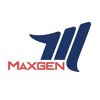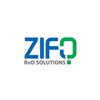Filter interviews by
Ilensys Technologies Interview Questions, Process, and Tips
Ilensys Technologies Interview Experiences
25 interviews found
I applied via Naukri.com and was interviewed before Jun 2023. There was 1 interview round.
(10 Questions)
- Q1. What is the saturation temperature of refrigerant?
- Ans.
Saturation temperature of refrigerant is the temperature at which the refrigerant changes state from liquid to vapor at a given pressure.
Saturation temperature is specific to each refrigerant and pressure level.
It is an important parameter in the design and operation of refrigeration systems.
For example, the saturation temperature of R-134a at 1 atm pressure is -26.1 degrees Celsius.
- Q2. What is subcooling and superheating and its important?
- Ans.
Subcooling and superheating are processes in which a substance is cooled or heated beyond its saturation point, respectively.
Subcooling is the process of cooling a liquid below its saturation temperature without changing its phase.
Superheating is the process of heating a vapor above its saturation temperature without changing its phase.
Subcooling helps in increasing the efficiency of refrigeration systems by ensuring t...
- Q3. What is the main function of compressor in VCRS? what if we removed the compressor?
- Ans.
The main function of the compressor in VCRS is to compress the refrigerant gas, increasing its pressure and temperature. Without the compressor, the VCRS would not be able to cool the air effectively.
Compressor compresses the refrigerant gas, increasing its pressure and temperature
This high-pressure, high-temperature gas then flows through the condenser where it releases heat to the surrounding air
If the compressor is ...
- Q4. What is viscosity and in which component of VCRS more amt of oil deposits?
- Ans.
Viscosity is a measure of a fluid's resistance to flow. More oil deposits are typically found in the evaporator component of VCRS.
Viscosity is the measure of a fluid's resistance to flow. It determines how easily a fluid can move within a system.
In VCRS (Vehicle Cabin Refrigeration System), more oil deposits are usually found in the evaporator component due to lower temperatures and slower flow rates.
Higher viscosity o...
- Q5. What is GWP and ODP and what are the natural refrigerants?
- Ans.
GWP stands for Global Warming Potential, ODP stands for Ozone Depletion Potential. Natural refrigerants include CO2, ammonia, and hydrocarbons.
GWP measures how much heat a greenhouse gas traps in the atmosphere over a specific time period compared to CO2
ODP measures the potential for a substance to destroy the ozone layer compared to CFC-11
Natural refrigerants like CO2, ammonia, and hydrocarbons have low GWP and zero O...
- Q6. What is the difference between VARS and VCRS?
- Ans.
VARS stands for Variable Air Volume Reheat System, while VCRS stands for Variable Chilled Water Reheat System.
VARS controls the air flow rate and temperature to maintain comfort in a space, while VCRS controls the chilled water flow rate and temperature.
VARS is commonly used in HVAC systems for commercial buildings, while VCRS is used in systems where precise temperature control is required.
VARS can be more energy effi...
- Q7. Which one is having more thermal conductivity steel or copper?
- Ans.
Copper has higher thermal conductivity than steel.
Copper has a thermal conductivity of around 400 W/mK, while steel typically has a thermal conductivity of around 50 W/mK.
This means that copper is a much better conductor of heat compared to steel.
Copper is commonly used in heat exchangers and electrical wiring due to its high thermal conductivity.
Steel, on the other hand, is used in applications where strength and dura...
- Q8. What is Bernoullis principle? What is the relationship between Area and velocity?
- Ans.
Bernoulli's principle states that an increase in the speed of a fluid occurs simultaneously with a decrease in pressure or a decrease in the fluid's potential energy.
Bernoulli's principle is a fundamental concept in fluid dynamics that states that as the speed of a fluid increases, its pressure decreases.
The relationship between area and velocity is described by the equation A1V1 = A2V2, where A is the cross-sectional ...
- Q9. What is bending stress can you write a formula?
- Ans.
Bending stress is a type of stress that occurs when a material is subjected to bending.
Bending stress is calculated using the formula: σ = M*c/I, where σ is the bending stress, M is the bending moment, c is the distance from the neutral axis to the outermost fiber, and I is the moment of inertia.
Bending stress is commonly seen in beams, bridges, and other structures subjected to bending loads.
The formula for bending st...
- Q10. What is chiller and how it works?
- Ans.
A chiller is a machine that removes heat from a liquid via a vapor-compression or absorption refrigeration cycle.
Chillers are commonly used in air conditioning systems to cool buildings or industrial processes.
They work by transferring heat from the liquid being chilled to a refrigerant, which then flows through a compressor and condenser to release the heat.
The chilled liquid is then circulated through the system to a...
Interview Preparation Tips
- Refrigeration
- Heat Transfer
(1 Question)
- Q1. Difference between passive component and active component
- Ans.
Passive components do not require an external power source to operate, while active components do require an external power source.
Passive components include resistors, capacitors, inductors, and transformers.
Active components include transistors, diodes, integrated circuits, and operational amplifiers.
Passive components do not amplify or control the flow of electrical current, while active components do.
Passive compon...
Component Engineer Interview Questions asked at other Companies
I applied via Naukri.com and was interviewed in Sep 2023. There were 3 interview rounds.

(5 Questions)
- Q1. Why are use draft angle in plastic?
- Ans.
Draft angles are used in plastic to facilitate easy ejection of the molded part from the mold.
Draft angles help prevent the part from getting stuck in the mold during ejection
They reduce friction between the part and the mold walls
Draft angles improve the overall quality and consistency of the molded part
Common draft angles range from 1 to 3 degrees, depending on the material and design
- Q2. What is shrinkage in plastic?
- Ans.
Shrinkage in plastic refers to the reduction in size of a plastic part during the cooling process after molding.
Shrinkage occurs due to the cooling and solidification of the molten plastic material.
It is important to account for shrinkage when designing molds for plastic parts.
Factors affecting shrinkage include the type of plastic material, mold temperature, and cooling rate.
Examples of plastics with high shrinkage in...
- Q3. How to prevent plastic defects, which design consideration method are used?
- Ans.
To prevent plastic defects, design engineers use methods such as mold flow analysis, material selection, gate design optimization, and part geometry considerations.
Perform mold flow analysis to identify potential issues before production.
Select the appropriate plastic material based on the requirements of the part.
Optimize gate design to ensure proper filling and packing of the mold.
Consider part geometry to minimize s...
- Q4. What is design library in solid Works?
- Ans.
Design library in SolidWorks is a feature that allows users to store and reuse commonly used parts, features, and assemblies.
Design library provides easy access to standard components like screws, nuts, bolts, etc.
Users can drag and drop items from the design library directly into their designs.
It helps in saving time by reusing pre-designed components instead of creating them from scratch.
Design library can be customi...
- Q5. Joining of 2 sheet metal process?
- Ans.
The joining of 2 sheet metal processes can be achieved through methods like welding, riveting, adhesive bonding, or clinching.
Welding: involves melting the edges of the two sheet metals and fusing them together.
Riveting: involves using metal fasteners to join the two sheet metals together.
Adhesive bonding: involves using a strong adhesive to bond the two sheet metals together.
Clinching: involves deforming the edges of
(3 Questions)
- Q1. Plastic defects?
- Q2. Which method are used to plastic manufacturing?
- Ans.
Various methods such as injection molding, blow molding, extrusion, and rotational molding are used in plastic manufacturing.
Injection molding: molten plastic is injected into a mold to create a part
Blow molding: air pressure is used to expand molten plastic into a mold
Extrusion: plastic is melted and forced through a die to create a continuous profile
Rotational molding: powdered plastic is rotated in a mold until it c
- Q3. Plastic design consideration?
- Ans.
Plastic design consideration involves material selection, part geometry, manufacturability, and environmental impact.
Material selection based on properties like strength, flexibility, and temperature resistance.
Consideration of part geometry for moldability, assembly, and functionality.
Ensuring manufacturability by designing for injection molding, extrusion, or other processes.
Addressing environmental impact by choosin...
Interview Preparation Tips
- Solid Works
- New Product Development
Top Ilensys Technologies Design Engineer Interview Questions and Answers
Design Engineer Interview Questions asked at other Companies
I applied via Walk-in and was interviewed in Apr 2024. There were 3 interview rounds.
It is all about Core questions
Regarding current affairs
(2 Questions)
- Q1. Static load vs dynamic load
- Ans.
Static load is a constant force acting on a structure, while dynamic load is a varying force that changes with time.
Static load remains constant over time, while dynamic load fluctuates.
Examples of static load include the weight of a building or a bridge, while examples of dynamic load include wind or earthquake forces.
Static load is easier to predict and design for, while dynamic load requires more complex analysis an...
- Q2. Dynamic load vs static load
- Ans.
Dynamic load is a moving or changing force applied to a structure, while static load is a stationary force.
Dynamic load is a force that changes or moves over time, such as a moving vehicle on a bridge.
Static load is a constant force applied to a structure, like the weight of a building on its foundation.
Dynamic loads can cause vibrations and fatigue in structures, while static loads typically do not.
Examples of dynamic...
Interview Preparation Tips
Mechanical Engg. Design Interview Questions asked at other Companies
Ilensys Technologies interview questions for popular designations
(2 Questions)
- Q1. Define k-factor
- Q2. Basics of gd&t
(2 Questions)
- Q1. Difference between stress and pressure
- Ans.
Stress is the internal resistance of a material to deformation, while pressure is the force exerted on a surface.
Stress is a measure of the internal forces within a material, while pressure is a measure of the external force applied to a surface.
Stress is a scalar quantity, while pressure is a vector quantity.
Stress is typically measured in units of force per unit area (such as N/m^2 or Pa), while pressure is also meas...
- Q2. What is mean by Root cause analysis?
- Ans.
Root cause analysis is a systematic process of identifying the underlying cause of a problem or issue.
Root cause analysis helps in understanding the fundamental reason behind a problem.
It involves investigating the symptoms, identifying potential causes, and determining the primary cause.
By addressing the root cause, it is possible to prevent the problem from recurring.
Root cause analysis techniques include 5 Whys, Fis...
Top Ilensys Technologies Design Engineer Interview Questions and Answers
Design Engineer Interview Questions asked at other Companies
Jobs at Ilensys Technologies
I applied via LinkedIn and was interviewed in Jul 2023. There were 2 interview rounds.

(1 Question)
- Q1. Calculate the Voltage in a transistor guess the circuit like these This will be written test 5 questions only on Electronics Subjects no aptitude or reasoning
- Ans. Need to be good at circuits
Interview Preparation Tips
They will say the about bond and training period before the interview only if there is any
Electronics Engineer Interview Questions asked at other Companies

(1 Question)
- Q1. Formal screening
(1 Question)
- Q1. Related to technical
(1 Question)
- Q1. Related to technical wit manager
(1 Question)
- Q1. Related to technical with director
Component Engineer Interview Questions asked at other Companies

(1 Question)
- Q1. About electric circuits
(1 Question)
- Q1. Tell about yourself
Electronics Engineer Interview Questions asked at other Companies
I applied via Walk-in and was interviewed in Jan 2023. There were 2 interview rounds.

(2 Questions)
- Q1. Test Core based easy question Prepare well electronics subjects About rectifier and opamp About nodal analysis
- Q2. About Kcl and kvl and mesh
Interview Preparation Tips
Internship Trainee Interview Questions asked at other Companies
I applied via Walk-in and was interviewed in Dec 2022. There were 3 interview rounds.

(1 Question)
- Q1. Speaking skils shuld be observed
(3 Questions)
- Q1. Basics of Electronics
- Q2. Question on written Test conducted by ilensys
- Q3. Question on Analog devices like opamp
Interview Preparation Tips
Intern Interview Questions asked at other Companies
Top trending discussions






Ilensys Technologies Interview FAQs
Some of the top questions asked at the Ilensys Technologies interview -
The duration of Ilensys Technologies interview process can vary, but typically it takes about less than 2 weeks to complete.
Tell us how to improve this page.
Ilensys Technologies Interviews By Designations
- Ilensys Technologies Design Engineer Interview Questions
- Ilensys Technologies Component Engineer Interview Questions
- Ilensys Technologies Electronics Engineer Interview Questions
- Ilensys Technologies Intern Interview Questions
- Ilensys Technologies Mechanical Engg. Design Interview Questions
- Ilensys Technologies Hardware Design Engineer Interview Questions
- Ilensys Technologies Embedded Software Developer Interview Questions
- Ilensys Technologies Associate Consultant Interview Questions
- Show more
Interview Questions for Popular Designations
- Design Engineer Interview Questions
- Associate Interview Questions
- Intern Interview Questions
- Business Analyst Interview Questions
- Graduate Engineer Trainee (Get) Interview Questions
- Accountant Interview Questions
- Senior Software Engineer Interview Questions
- Data Analyst Interview Questions
- Show more
Ilensys Technologies Interview Process
based on 20 interviews
Interview experience
Interview Questions from Similar Companies
Ilensys Technologies Reviews and Ratings
based on 136 reviews
Rating in categories
|
Design Engineer
68
salaries
| ₹3 L/yr - ₹8 L/yr |
|
Component Engineer
41
salaries
| ₹2.5 L/yr - ₹6 L/yr |
|
Design Engineer II
34
salaries
| ₹4 L/yr - ₹8.5 L/yr |
|
Junior Design Engineer
28
salaries
| ₹2.9 L/yr - ₹4.9 L/yr |
|
Senior Design Engineer
22
salaries
| ₹3.2 L/yr - ₹10 L/yr |

Maxgen Technologies

Value Point Systems

JoulestoWatts Business Solutions

F1 Info Solutions and Services
- Home >
- Interviews >
- Ilensys Technologies Interview Questions
















